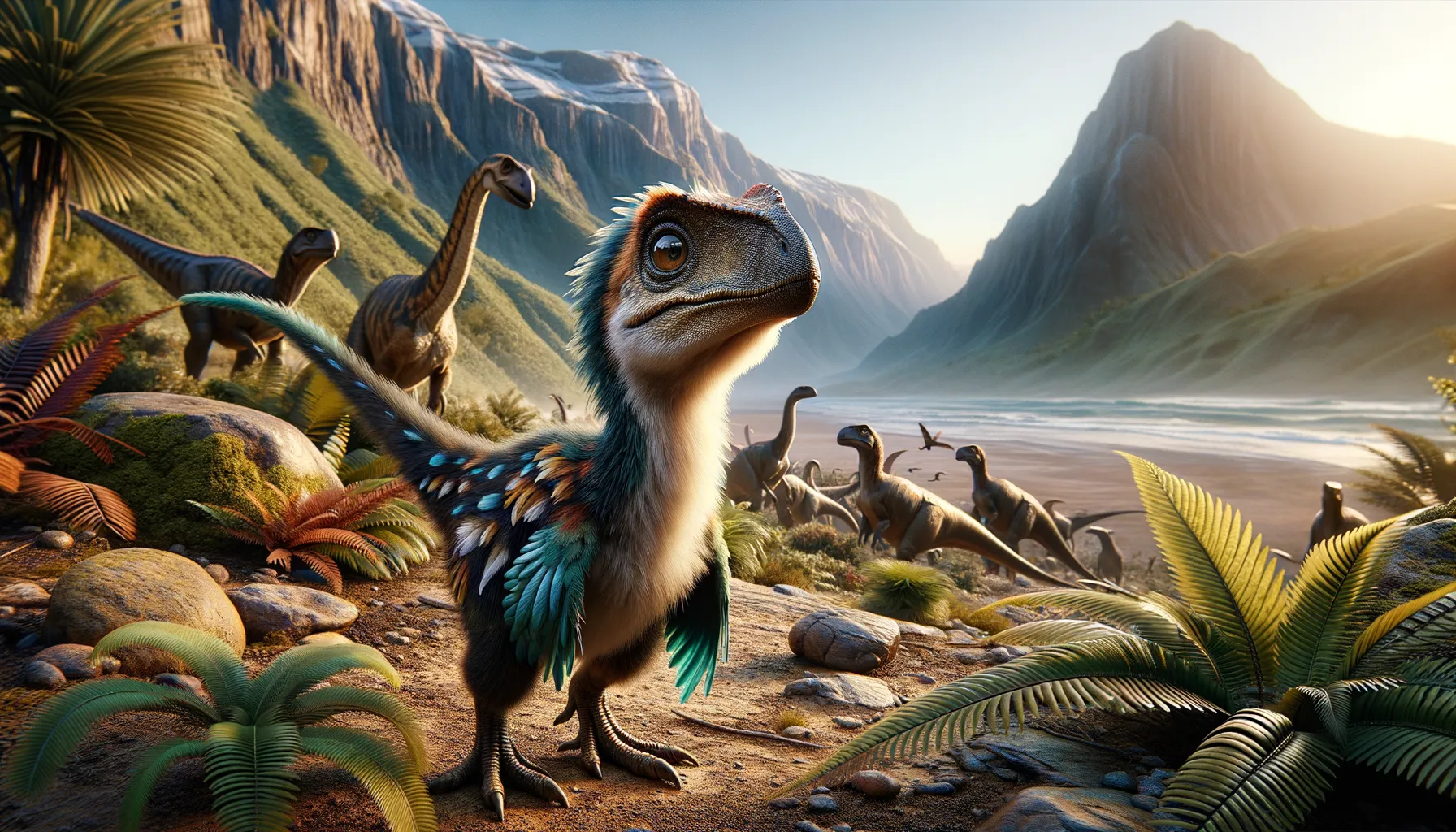
Archaeornis
Bridging the gap from dinosaurs to birds.
Period
Jurassic
Length
It was approximately 50 centimeters long.
Height
It measured about 20 centimeters tall.
Weight
It weighed around 1 to 2 kilograms.
Archaeornis was a small, feathered dinosaur resembling modern-day birds in some respects. It lived during the Jurassic period and is considered one of the earliest links between dinosaurs and birds. Despite its diminutive size, Archaeornis played a significant role in paleontological studies by providing insights into the evolutionary transition from dinosaurs to birds.
Diet
Archaeornis likely had an insectivorous diet, feeding on small insects and possibly other small animals. Its sharp teeth and agile movements suggest it was well-adapted to catching prey.
Hunting
This dinosaur was likely a skilled hunter, utilizing its agility to chase and capture small, swift prey. It may have also employed stealth and camouflage to sneak up on unsuspecting insects or small vertebrates.
Environmental challenges
Archaeornis lived in a time of dynamic environmental changes, with shifting climates and evolving ecosystems. Predators were a constant threat, necessitating quick reflexes and keen senses for survival. Competition for food would have been another challenge as many species vied for similar resources.
Speed
Archaeornis was likely quite agile and could make short, quick movements.
Lifespan
Estimates suggest it had a lifespan of around 10 to 20 years.
First discovery
The first remains were discovered in the late 19th century.
Fun Facts
- Archaeornis lived around 150 million years ago during the late Jurassic period.
- It is considered one of the earliest known birds, providing a link between dinosaurs and modern birds.
- Archaeornis had a mix of traits from both dinosaurs and birds, like sharp teeth and feathers.
- Its name means 'ancient bird,' highlighting its place in the evolutionary timeline.
- This creature likely had a long tail with feathers, unlike most modern birds.
- Despite having wings, it is believed that Archaeornis could glide rather than fly actively.
- Fossil discoveries of Archaeornis have helped scientists learn about the evolution of flight.
Growth and Development
Archaeornis likely grew rapidly in its early years, a common trait among smaller dinosaurs and birds. Its development involved learning essential survival skills, such as hunting and evading predators. As it matured, Archaeornis honed its physical capabilities, becoming more adept at navigating its environment.
Habitat
Archaeornis inhabited lush, forested areas that provided ample cover and resources. These environments were filled with trees and ferns, ideal for its arboreal lifestyle. The terrain would have been diverse, with plenty of opportunities for foraging and nesting.
Interaction with other species
Archaeornis likely interacted with a range of other species, from potential predators to competitors. Its small size made it vulnerable to larger carnivores, necessitating cautious interactions. It would have competed with other small, feathered dinosaurs for food and resources.
Natural lifespan
Archaeornis's natural lifespan is believed to be relatively short, typical of small vertebrates.
Reproduction
Like many dinosaurs, Archaeornis likely laid eggs in nests constructed on the ground or in trees. It likely invested care in its offspring, protecting and possibly feeding them until they were independent. Reproductive strategies would have been crucial to successfully raising young in a competitive environment.
Social behaviour
It may have exhibited social behavior, perhaps living in small groups for protection or assistance in foraging. Cooperative interactions could have provided advantages in resource-limited situations. However, solitary behavior might have been necessary at times to reduce competition for scarce food.
Fossil locations
Fossil remains of Archaeornis have been found primarily in areas that were once lush with vegetation, indicating its preference for such environments. These findings have been instrumental in understanding the geographical distribution of early feathered dinosaurs.
